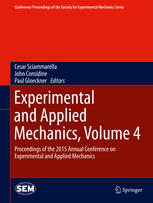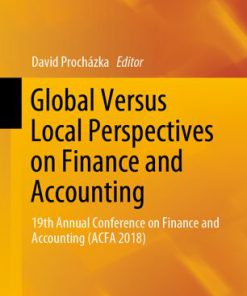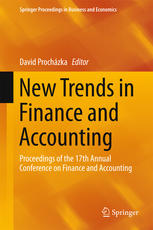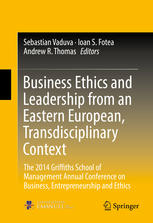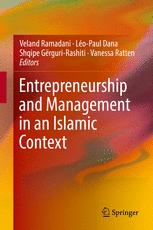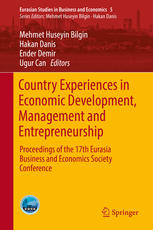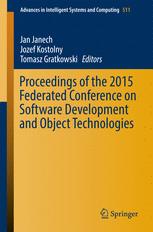Development Growth and Finance of Organizations from an Eastern European Context The 2015 Griffiths School of Management Annual Conference on Business Entrepreneurship and Ethics GSMAC 1st Edition by Sebastian Vaduva, Ioan Fotea, Andrew Thomas 3319544540 9783319544540
$50.00 Original price was: $50.00.$25.00Current price is: $25.00.
Development Growth and Finance of Organizations from an Eastern European Context The 2015 Griffiths School of Management Annual Conference on Business Entrepreneurship and Ethics GSMAC 1st Edition by Sebastian Vaduva, Ioan S. Fotea, Andrew R. Thomas – Ebook PDF Instant Download/DeliveryISBN: 3319544540, 9783319544540
Full download Development Growth and Finance of Organizations from an Eastern European Context The 2015 Griffiths School of Management Annual Conference on Business Entrepreneurship and Ethics GSMAC 1st Edition after payment.
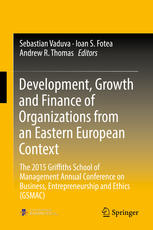
Product details:
ISBN-10 : 3319544540
ISBN-13 : 9783319544540
Author: Sebastian Vaduva, Ioan S. Fotea, Andrew R. Thomas
This book explores challenges and approaches to the development, financial management and growth of Eastern European organizations, both public and private. Including papers derived from the 2015 Griffiths School of Management Annual Conference on Business, Entrepreneurship and Ethics (GSMAC), organized by Emanuel University of Oradea, the authors provide a variety of strategies for growth and development in areas such as IT, medical management, marketing, entrepreneurship and family business. Collectively, these contributions provide a problem-solving framework that tackles such questions as: How are the growth and financial models of organizations changing? How should leadership in organizations adapt in order to ensure sustainable growth? How should educational concepts and methods be improved to help the next generation in the new global business environment? The rapid evolution of technology and innovation has changed the face of the business environment. With new actors in the global marketplace and new means of production, marketing and finance, businesses—particularly those in emerging regions, such as Eastern Europe—are faced with the pressure to rethink their structures and models from within. In this new economic climate, common issues such as corruption, risk, and customer satisfaction need to be examined from a globalized perspective. The goal of the 2015 GSMAC conference and the resulting papers is to help organizations and institutions in Eastern Europe and other developing regions formulate strategies and policies to thrive in this environment and promote sustainable management practices.
Development Growth and Finance of Organizations from an Eastern European Context The 2015 Griffiths School of Management Annual Conference on Business Entrepreneurship and Ethics GSMAC 1st Table of contents:
Chapter 1: Country Benchmarking for Setting Up a New Business
1.1 Introduction
1.2 Theoretical Background
1.3 Methodology
1.4 Results and Discussions
1.5 Social Progress Index
1.6 Economic Development Indicator
1.7 Conclusions
Bibliography
Chapter 2: The Image of Local Public Administrations in Transylvania Among Citizens: An Empirical
2.1 Introduction
2.2 Literature Review
2.2.1 The Local Public Administration
2.2.2 Image of the Public Administration
2.2.3 Public Administration Staff (Civil Servants)
2.2.4 Communication Within Public Administrations
2.2.5 Proximity or the Distribution of Public Administration Services
2.2.6 Web Presence of Public Administrations (E-Governance)
2.2.7 Local Taxes and Duties
2.3 Research Methodology
2.3.1 Research Objectives and Operationalisation of Constructs
2.3.2 Sample Characteristics
2.4 Results and Discussions for the General Model
2.5 Results and Discussion of the Model, Split According to the Various Categories of Consider
2.6 Conclusions, Limitations and Further Research Perspectives
Bibliography
Chapter 3: Entrepreneurial Myopia and Succession-Based Crises in Family Businesses: A Strategic O
3.1 Introduction
3.2 Structure of the Paper
3.3 Methodology
3.4 Contribution and Implications
3.5 Family Business Succession (FBS): A Literature Review
3.6 Real Option Theory
3.7 Entrepreneurship Theory: Entrepreneurial Functions
3.8 Entrepreneurial Functions and Real Options
3.9 An Analysis of the Process of Succession and Entrepreneurial Myopia
3.10 Context of the Business Succession
3.10.1 Role and Position of the Successor
3.10.2 Succession Process Stakeholders (Actors Involved in Succession)
3.10.3 Human and Social Capital of the Old and New Entrepreneurs
3.10.4 Number of Entrepreneurs Involved
3.10.5 Size, Age, and the History of the Firm
3.10.6 External Environment
3.11 Content of the Business Succession
3.12 Process of Business Succession
3.13 Post-succession Phase
3.14 Outlook and Limitations
Bibliography
Chapter 4: The Development of Medical Business Through Relational Marketing
4.1 Introduction
4.2 Medical Services Consumer
4.3 Differences and Similarities Between Medical Services Consumers and Other Consumers
4.4 The Behavior of the Consumer of Medical Services
4.5 Purchase Decision Process
4.6 Methods of Winning the Loyalty of Customers in Medical Services
4.7 Conclusion
Bibliography
Chapter 5: Customer Satisfaction in IT Professional Services Research
5.1 Introduction
5.2 Literature Review
5.3 Methodology
5.3.1 Explanation of Terms
5.3.2 Collection of Data
5.4 Survey Questions
5.4.1 Analysis Method
5.5 Results
5.5.1 Customer Satisfaction Ratings
5.6 Financial Factors
5.7 Employee Satisfaction per Project
5.8 Discussion
5.9 Conclusions
5.10 Results
5.11 Lessons Learned
5.11.1 Measure Customer Satisfaction and Use Customer Feedback for Continuous Improvement
5.11.2 Satisfied Customers Have the Potential to Be Our Best Marketers
5.11.3 Employee Satisfaction Influences Customer Satisfaction
Bibliography
Chapter 6: The New Phase Transition of the World Economy
6.1 Classical Approaches of the World Economic Dynamics
6.2 A Transdisciplinary Approach to the World Economic Phases
6.3 World Economic Phases of the Past and Their Phase Transitions
6.4 The New Phase Transition
6.5 The New Phase of the World Economy: Open-Commons
6.6 Conclusion
Bibliography
Chapter 7: Managerial Creativity Between Native Enhancing Factors and Environmental Influencers
7.1 The Need for Managerial Creativity
7.2 Managerial Creativity: Influencing Factors
7.3 Evaluating Creativity Skills and the Level of Creativity
7.3.1 Psychometric Approaches in the Research of Creativity
7.4 The Synergists’ Indicators of Creativity
7.5 Modern Methods and Instruments in Evaluating Skills for Creativity
7.6 Conclusion
References
Chapter 8: The Absence of Entrepreneurial Foresight as a Reason of Entrepreneurial Failure
8.1 Introduction
References
Chapter 9: Merger and Acquisition Activity During the Fifth Wave: USA vs. EU
9.1 Approaches on Merger and Acquisition Activity
9.2 Generating Factors and Characteristics of the Fifth Merger and Acquisition Wave
9.3 USA vs. EU Regarding Merger and Acquisition Activity
9.4 Conclusion
Bibliography
Chapter 10: Managerial Fractal Intelligences: Psychometric Evidence for Empowering the Theory of
10.1 Introduction
10.2 The Fractal Analysis Model of Multiple Intelligences
10.3 An Analysis of Managerial Intelligences, in the Theory of Fractal Intelligences
10.3.1 The “Root” Intelligence of the “MANAGER” Temperamental Type Is the Parsimonious In
10.3.2 The Dominant Intelligences of the “MANAGER” Temperamental Type Are
10.3.3 The Recessive Intelligences of the “MANAGER” Temperamental Type Are
10.4 Psychometric System for Rapid Determination of Psychological Indicators (Mindmi™)
10.5 Conclusion
Bibliography
Chapter 11: What Are the Main Determinants of the Romanian Shadow Economy? An Empirical Analysis
11.1 Introduction
11.2 Modelling the Shadow Economy
11.3 Data Issues
11.4 Estimating the MIMIC Model of the Romanian Shadow Economy
11.5 Obtaining the Size of the Romanian Shadow Economy
11.6 Conclusions
Appendix A: Analysis of Multi-normality
References
Chapter 12: The Capabilities of Romanian Universities to Attract EU Funds: A Case Study
12.1 EU Funding Programs and Universities: Preliminary Considerations
12.2 Measuring Absorption Capacity of EU Funds
12.3 The Capability of Romanian Universities in Attracting 2007–2013 EU Funds: A Case Study on
12.4 Conclusions
People also search for Development Growth and Finance of Organizations from an Eastern European Context The 2015 Griffiths School of Management Annual Conference on Business Entrepreneurship and Ethics GSMAC 1st:
development goals finance
development financing
development finance agency
development finance corporations
the development and organization of industry is called
Tags: Development Growth, Finance, Organizations, Eastern European, Management Annual Conference, Sebastian Vaduva, Ioan Fotea, Andrew Thomas
You may also like…
Business & Economics
Business & Economics
Business & Economics
Entrepreneurship and Management in an Islamic Context 1st Edition Veland Ramadani
Business & Economics
Business & Economics




